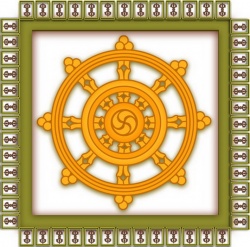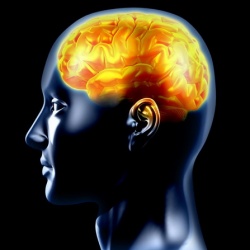Ten Reasons Balkh as Shambhala
Ten Reasons why I believe that Balkh (36.7 latitude, 66.8 longitude) is the location of the Historical Shambhala..... 1. The name......Shamis en Balkh...was referred to as the “Mother of Cities” and the “Elevated Candle” (Sham-i-Bala) ....Elevated/raised (bala) and candle (sham,sam)....Balkh was an ancient city and one of the major cities of Khorasan khor (meaning "sun") and asan ( "about to come"), hence meaning "land where the sun rises". . Marco Polo described Balkh as a "noble and great city". The period between 2600 and 2000 BC was the most important period in the history of Balkh.
2. The ruins....Texts from the Tun huang site identify Oddiyana as "Shamis en Balkh" in modern day Balkh, Afghanistan where many ruins, Buddhist stupas and monasteries exist. Oddiyana was conquered in about 176 B.C. and there is no modern city on the site so it is just an archeological site.
Near Balkh (Sham-i-bala) is the Kalah (Castle) of Bactria (aka: Bākhtri, Oddiyana, Daxia, Bāxδi , Sham-i-bala, Olmo Lungring, etc) was not really a unified political state but a very wealthy region consisting of the fertile plains on either side of the Oxus River and surrounded by the great Pamir and Hindu Kush mountain ranges. Protected with a mild climate, well irrigated land and rich with gold and gemstones. The palaces of the Balkh region were decorated with silk, gold, and gemstones. Known as the Land of a Thousand Cities, the great cities each had a Calah (Castle, Kala) and a King.
Balkh was the largest and most grand. Balkh was at it height from 2700- 2000 BC but of great importance from 600 BC until 600 AD.... Xuanzhang says: "It has many mountains and river-courses. It produces excellent (shen) horses [literally: ‘divine’ or ‘Heavenly’ horses. It was a mounted warrior culture. The Bactrian warriors were famous: they are known to have been part of the army of Xerxes, who invaded Greece in 480. Herodotus mentions their turbans, bows, and spears....high-lifted banners ......By 1000 AD it was in steep decline.
Bactria, also called Bactriana or Zariaspa, ancient country lying between the mountains of the Hindu Kush and the Amu Darya (ancient Oxus River) in what is now part of Afghanistan, Uzbekistan, and Tajikistan. Bactria was especially important between about 600 bc and about ad 600, serving for much of that time as a meeting place not only for overland trade between East and West but also for the crosscurrents of religious and artistic ideas. Bactria’s capital was Bactra, also called Bactra-Zariaspa (modern Balkh, Afghanistan). Bactria was a rich fertile country, fed by numerous rivers and a profusion of mounds and abandoned water channels
6. Buddhism...., during the life of the historical Buddha, two Merchant brothers from Balkh visited the Buddha in his eighth week of enlightenment, became his first disciples and then returned to Balkh to build temples dedicated to him.....during the first century Balkh was famous throughout the region for its Buddhist temples and Nava Vihara University was sencond only to Nalanda..... in the north-west corner of the Indian subcontinent, known as the sacred garden-like Kingdom of Uddiyana. It was in Uddiyana that Padmasambhava was born....
7. Dzogchen...."Dzog chen comes to Tibet from the northwest - from a persian source (repeated in earlier Nyingmapa sources but affirmed by the great 19 century Nyingmapa scholar and practitioner, Jamgon Kongtrul Lodro Taye) and from Oddiyana in Shambhalla (the Tun huang and [[Wikipedia:Central Asian|Central Asian]] Buddhist texts recovered by Emmerich and discussed by snellgrove and taught as part of recovered Buddhist history in Dharmasala identify this region as 'Shamis en Balkh' - modern day Balkh in Afghanistan where ruins of many Buddhist stupas and monasteries still exist)."
8. Other spiritual traditions......Zoroastrianism originated in Balkh, perhaps in the 6th century B.C.E....Sufism: “All roads lead to Balkh ,” uttered Gurdjieff, referring to the Sufic origin of all systems.......There was a flourishing Manichaean community in Balkh. ....By the latter half of the 2nd century, Christianity had spread east throughout Media, Persia, Parthia, and Bactria (Balkh).....Buddhist stupas, Zoroastrian fire temples, and Nestorian Christian churches – all religions made their homes here.
9. Greco-Bactrian....Alexander The Great took Bactria in 329 B.C.E., and made it his base for conquest and amalgamation of the Greek and Iranian civilizations....Balkh was the birthplace of Roxana, the bride of Alexander the Great.....The Greco-Bactrian Kingdom was (along with the Indo-Greek Kingdom) the easternmost part of the Hellenistic world, covering Bactria and Sogdiana in Central Asia from 250 to 125 BC. The expansion of the Greco-Bactrians into northern India from 180 BC established the Indo-Greek Kingdom, which was to last until around AD 10.
10. The Royal Court....A huge castle (Calah, Kala) with great towered outer walls of sun-dried brick...surrounded by its gardens. in the centre of the old city, in a circle of palm trees, the great shrines studded with gems and jewels...."Mother of Cities'. Had 7 gates. Shrine to rival the Ka'abah in Mecca. Castle was called Kal'ah Hinduwan after the Arab invasions of the 7th century. The Shambhalians then migrated Northeast into the Uighur Kingdom of Gesar.
Posted by John Hopkins

